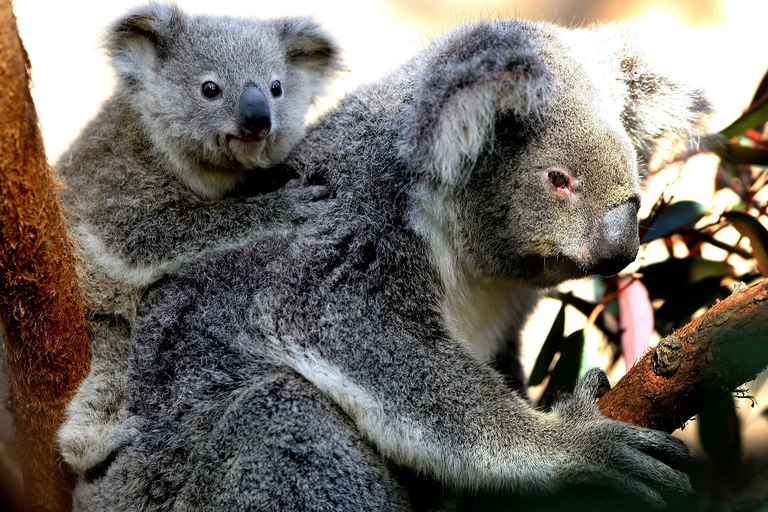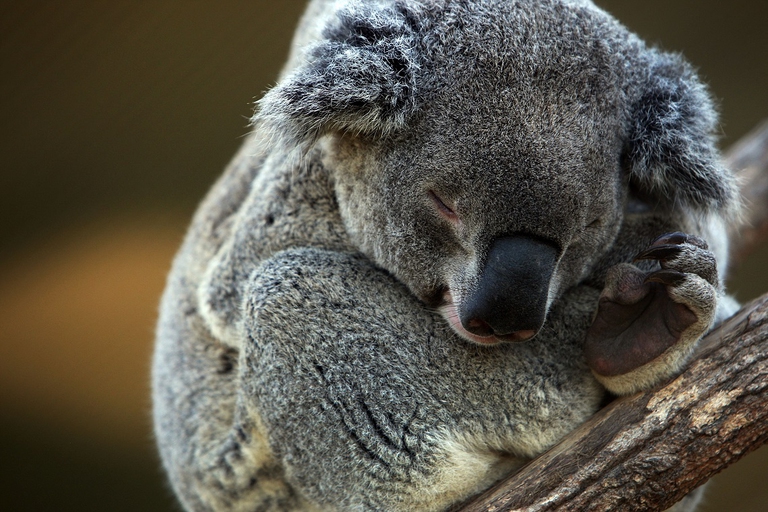
Our species took its first steps in a world covered in trees. Today, forests offer us sustenance, shelter, and clean the air that we breathe.
The Australian Koala Foundation has reported that there are only 80,000 koalas left in the wild. The species looks destined to disappear forever, making it “functionally extinct”.
Together with the kangaroo, the koala (Phascolarctos cinereus) is unquestionably the Australian continent’s most iconic animal. It lives in our imaginary, lying on a eucalyptus tree, lazily eating its leaves: it’s hard to think of it otherwise. But these marsupials could soon become extinct, leaving a void in the Australian outback and in our hearts. The alarm has been raised by the Australian Koala Foundation (AKF) – an organisation devoted to these animals’ conservation – according to which there are only 80,000 koalas left in the wild, a number low enough for the species to be considered “functionally extinct”.
The AKF’s findings imply that the number of specimens is too low to guarantee the survival of future generations. In 2010, the organisation started to monitor 128 districts in which koalas have historically been present, revealing that the animals have disappeared from 41 of these. The Foundation’s estimates are significantly lower than ones from previous studies; for example, research carried out in 2016 suggested that there were approximately 330,000 koalas living in Australia. Determining the exact number is very difficult, but what is beyond doubt is the terrible decline the species is suffering, with only 1 per cent of the original population remaining. Since May 2012, koalas have been listed as an at-risk species in Queensland, New South Wales and the Australian Capital Territory.
Read more: Why do koalas hug trees?
This term can refer to several different situations, for example to “a species whose population has declined to the point where it can no longer play a significant role in their ecosystem”, explains Christine Adams-Hosking, a researcher at Queensland University. It can also refer to a species whose fate is sealed because it has almost, or completely, lost its habitat. “Functionally extinct” can also mean, like in the case of koalas, “a small population that, although still breeding, is suffering from inbreeding that can threaten its future viability”, Adams-Hosking continues. The lack of genetic variety which was brought to light by recent genetic research represents a further menace for koalas.
The reasons behind the disappearance of the koala, a species that has inhabited Australia for approximately 30 million years, are primarily anthropogenic. In the past, these endearing marsupials were extensively hunted for their pelts, while today they face the threat of deforestation, which decreases the size of their habitat, as well as the effects of the climate crisis. The increase in temperatures is causing periods of drought to last longer, as well as the risk of wildfires and spread of disease.
The destruction of eucalyptus forests, on which koalas depend, is the primary threat these animals face. To try and contrast their disappearance, scientists claim that it’s essential to protect remaining forests and create new ones by reforesting large areas. Political will is crucial in achieving this. “For years we’ve been asking governments to help us in the fight to save Australia’s symbol – says Deborah Tabart, President of the AKF – but politicians have deferred their commitments and make up excuses. The most absurd thing is that we have a law that allows companies to destroy these animals’ habitat”.
Siamo anche su WhatsApp. Segui il canale ufficiale LifeGate per restare aggiornata, aggiornato sulle ultime notizie e sulle nostre attività.
![]()
Quest'opera è distribuita con Licenza Creative Commons Attribuzione - Non commerciale - Non opere derivate 4.0 Internazionale.
Our species took its first steps in a world covered in trees. Today, forests offer us sustenance, shelter, and clean the air that we breathe.
Poachers in Africa are encroaching on wildlife land and killing rhinos in travel hot spots now devoid of visitors due to the coronavirus pandemic.
Actor and environmental activist Leonardo DiCaprio has contributed two million dollars to a fund to protect Virunga National Park in Congo from threats such as terrorism, the coronavirus and poaching.
For the first time in seventeen years, Iceland’s two main whaling companies won’t resume whale hunting. The announcement concerns this year’s season but could carry into the future.
The relationship between the coronavirus and wildlife is complex: while the pandemic may lead to a reduction in the illegal trade in wild animals, it may also encourage it in other respects.
The largest coral reef in the world is severely threatened by climate change, but researchers are developing strategies that could contribute to saving the Great Barrier Reef.
NGO Free the Bears has opened a mountain sanctuary for moon bears in Laos. With the government’s help, it aims to close all bile farms by 2022.
Seychelles have extended its marine protected area, which now covers over 400,000 square kilometres, an area larger than Germany.
The tapir was reintroduced into Brazil’s Atlantic Forest, the country’s most at-risk ecosystem. The species can play a key role in the forest’s recovery.









